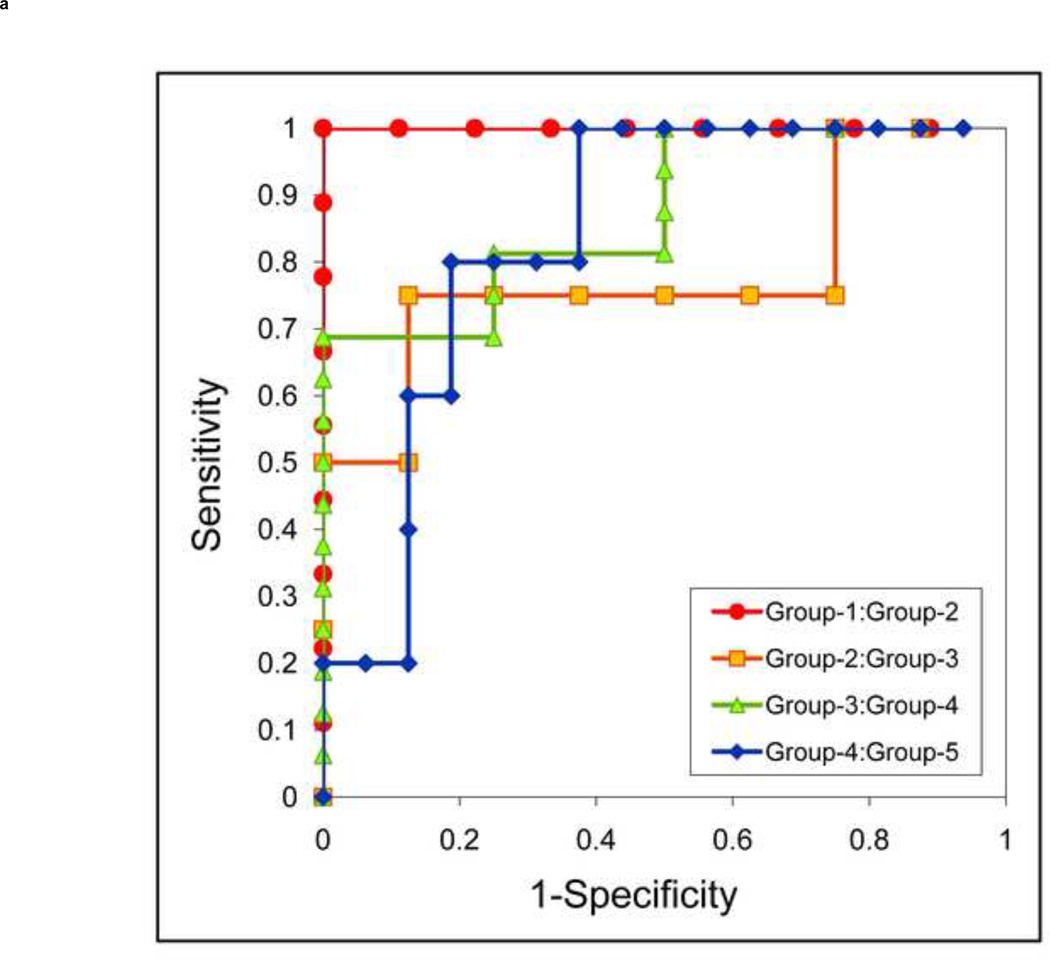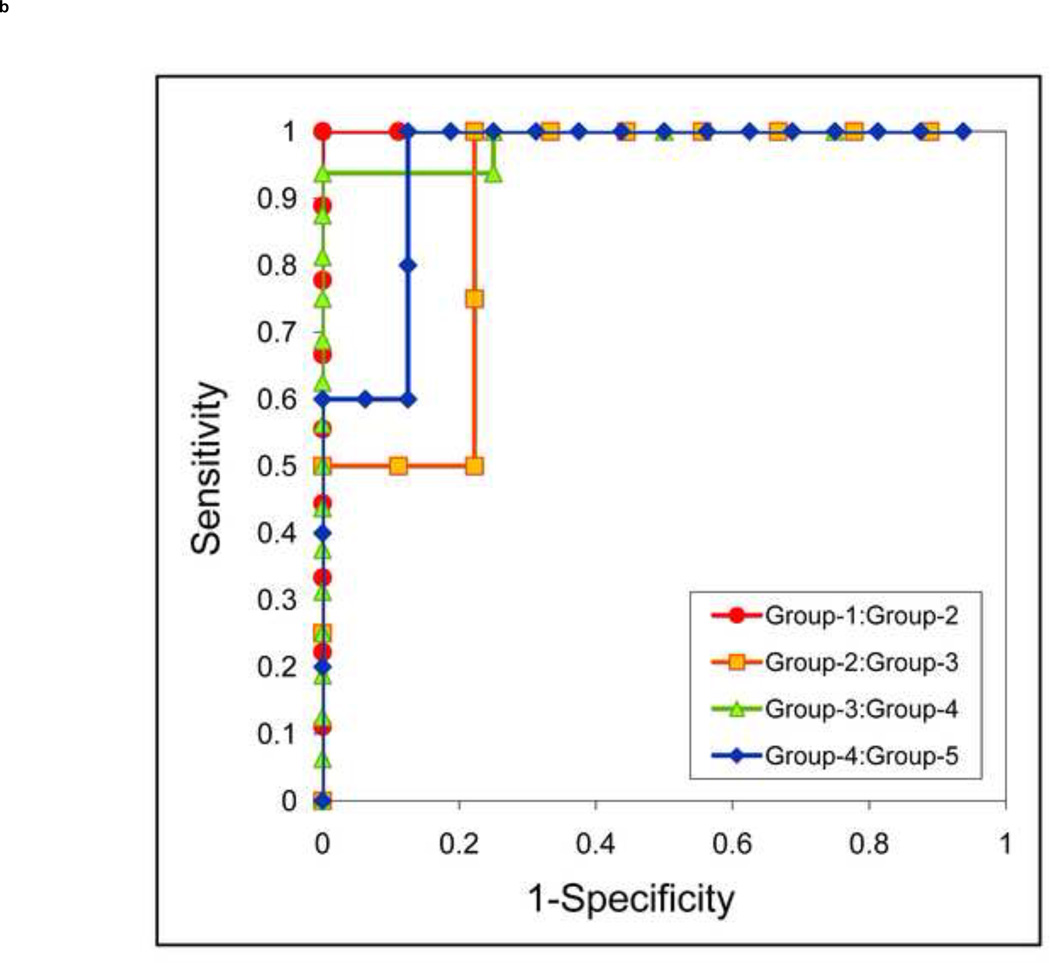Fig. 5.
Receiver Operating Characteristic (ROC) analysis of the stone composition differentiation using dual-source DECT with and without additional tin filtration. Four ROC curves are illustrated to indicate the ability of DECT to differentiate five stone groups: Group 1: uric acid, uric acid dihydrate and ammonium acid urate; Group 2: cystine; Group 3: struvite; Group 4: calcium oxalate monohydrate, calcium oxalate dihydrate and brushite; Group 5: hydroxyapatite and carbonate apatite. The ROC curves with tin filtration (b) show larger area under the curve than without tin filtration (a), which suggests a better method to differentiate the five stone groups.


